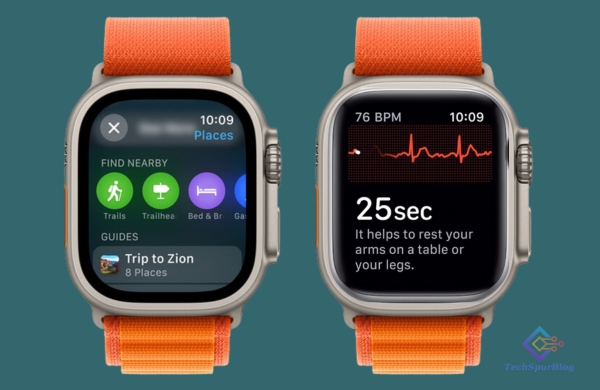
Apple has always been at the forefront of innovation, particularly when it comes to health and wellness features in their smartwatches. The latest buzz in the tech world suggests that the upcoming Apple Watch Series 10 might introduce a groundbreaking feature a blood pressure monitor. This addition could potentially revolutionize how users monitor their health and well-being.
Apple’s Evolution in Health Monitoring
Apple has continually pushed the boundaries of health monitoring through its Watch series, initially focusing on detecting existing heart issues. However, they have now shifted their attention to preventive health measures. This transition has been met with some skepticism from the medical community working within Apple, as the pressure to maintain the company’s impeccable image is palpable.
As a result, the first-generation blood pressure monitor is expected to have limited functionality. It will primarily serve as a notifier, alerting the user if their blood pressure is exhibiting a positive trend. When an alert is triggered, the user can jot down their current feelings or symptoms. Nonetheless, it won’t offer precise measurements or diagnostic capabilities. These more advanced functions might be on the horizon in future generations but are still a ways off.
These alerts are essentially a recommendation to consult a medical professional, who can conduct a more comprehensive examination and provide accurate information. While this might be seen as a cautious approach, it aligns with Apple’s commitment to promoting health and well-being while not crossing into the realm of medical diagnosis.
Also Read: Top Tips for watchOS 10: Maximizing Your Apple Watch’s Potential
Standing Amongst Competitors
While this potential feature is groundbreaking for Apple, it’s not entirely unique in the smartwatch market. Huawei introduced blood pressure monitoring in its Watch D in 2021, and Samsung offers similar capabilities in some of its Galaxy Watch models. However, Apple’s approach seems to be distinct as it doesn’t require a specific external device for initial calibration.
Looking Ahead
The blood pressure monitor isn’t the only health-related feature that Apple is exploring. A blood glucose sensor, mirroring the philosophy of providing alerts and suggestions rather than precise readings, is also rumored to be in development. This feature could be a game-changer for individuals managing their glucose levels, particularly those with diabetes.
Moreover, Apple is venturing into sleep health by planning to include sleep apnea detection in its 2024 model. Sleep apnea, a potentially severe condition, often goes undiagnosed. The Watch’s ability to detect it could lead to early intervention and better health outcomes for users.
Beyond the Watch: Apple’s Health Ecosystem
It’s not just the Apple Watch that’s getting a health-focused upgrade. The AirPods, Apple’s wireless earbuds, are rumored to support hearing quality tests. Typically, such tests are conducted by specialists, but with Apple’s innovation, users may be able to assess their hearing health with greater ease.
Furthermore, the Apple Vision Pro, a headset, is expected to offer mental health diagnostic features. This addition could help users monitor their mental well-being, potentially revolutionizing mental health care.
Additionally, the headset may support integrated prescription lenses, enhancing the user experience.
Also Read: Google Unveils the Pixel Watch 2: A Comprehensive Preview
Future of Health Monitoring
Apple’s ongoing commitment to health and wellness features is commendable. While the blood pressure monitor in the Series 10 Watch represents a significant step forward, it’s just one facet of a broader health ecosystem that Apple is building. With its focus on prevention, early detection, and user-friendly health features, Apple is poised to make a substantial impact on the future of wearable technology and health monitoring. As these innovations continue to unfold, users can look forward to a healthier and more convenient way of managing their well-being.

Leave a Reply